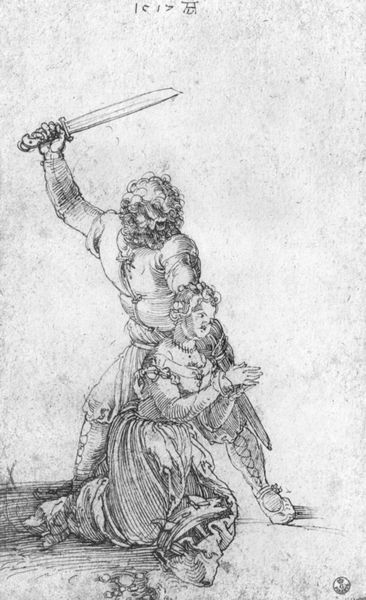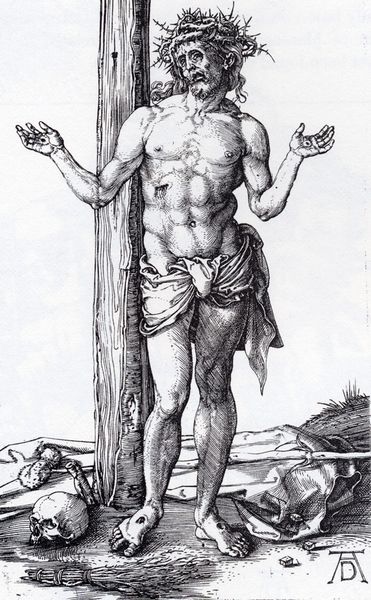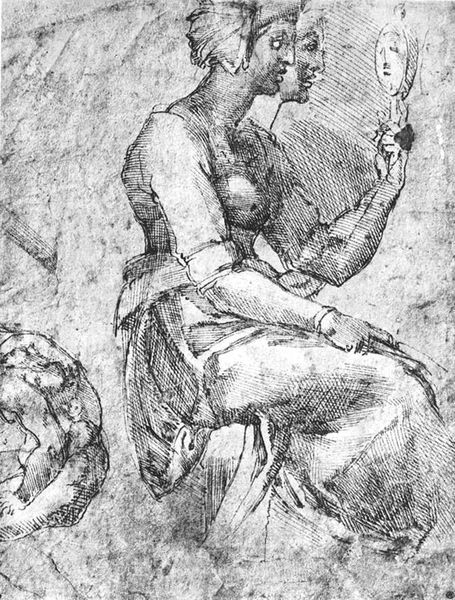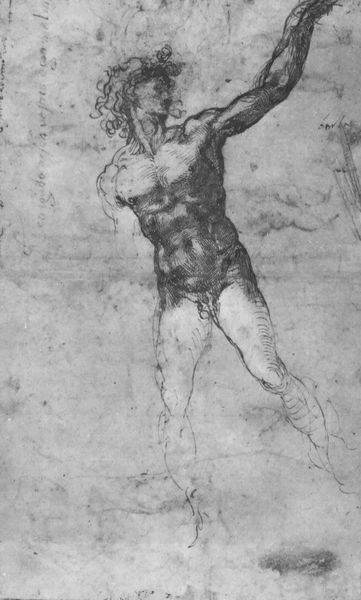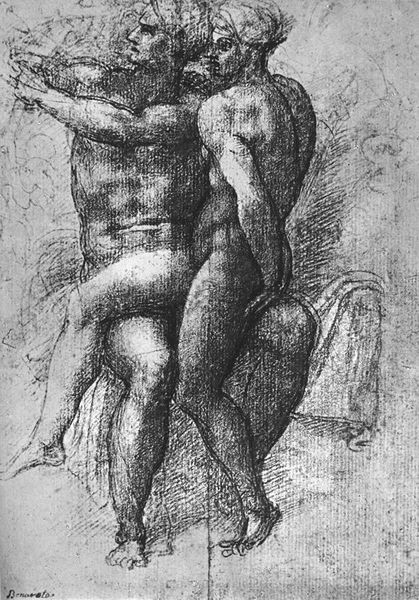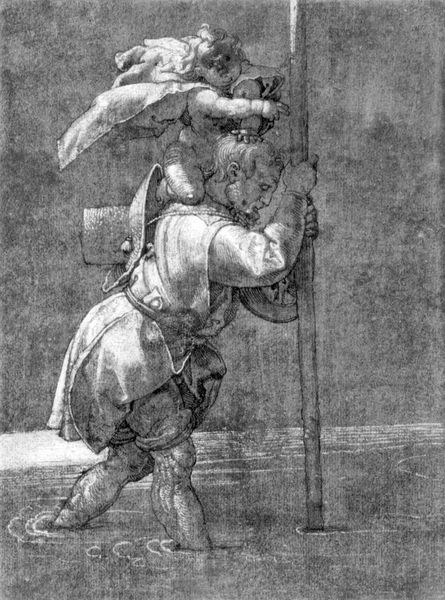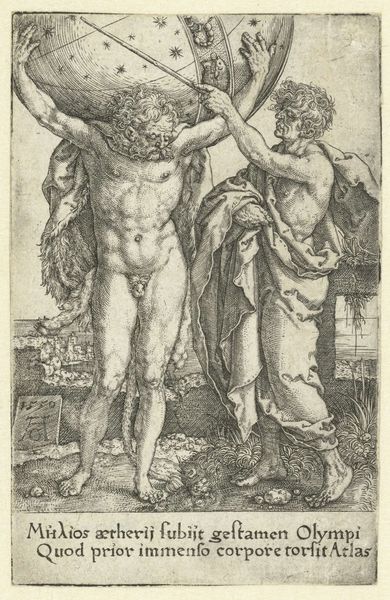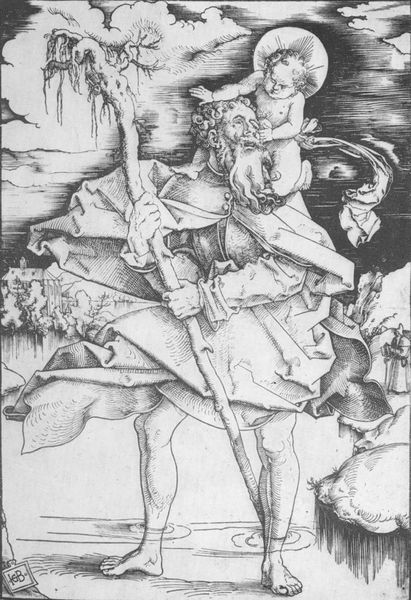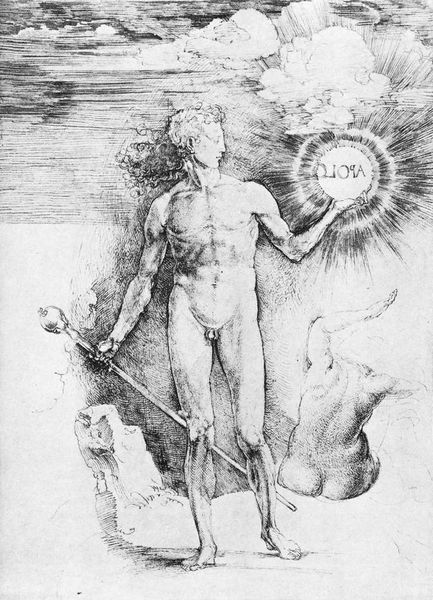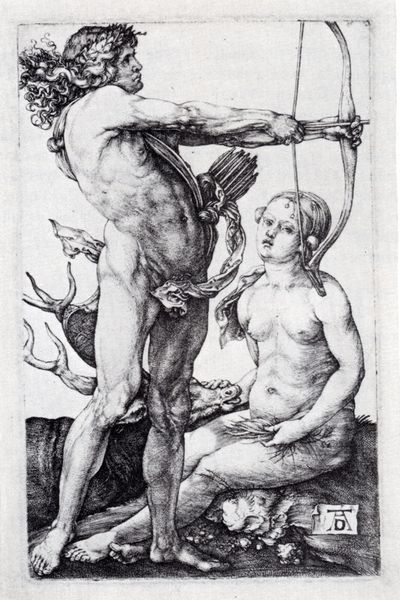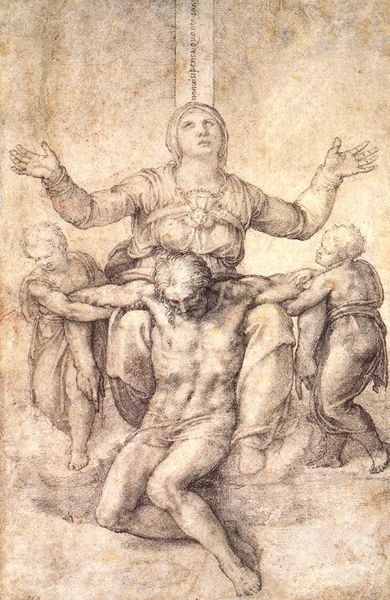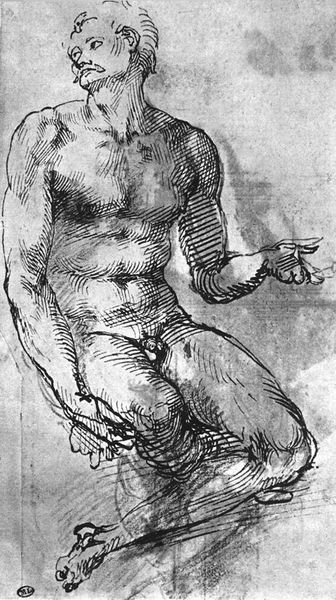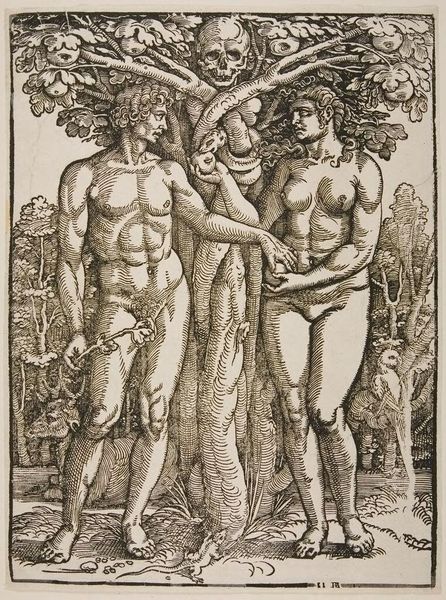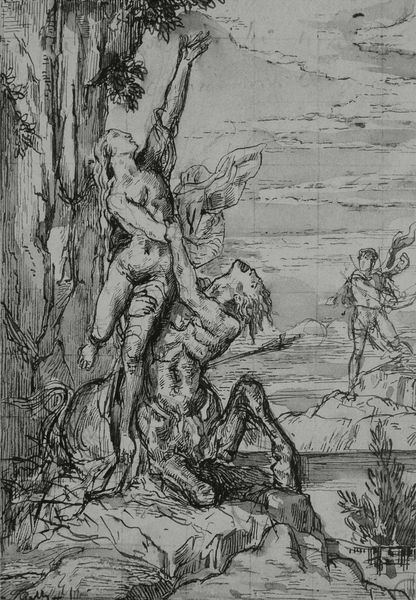
drawing, pencil
#
drawing
#
figuration
#
pencil
#
history-painting
#
northern-renaissance
#
nude
Copyright: Public domain
Editor: Here we have Albrecht Dürer’s pencil drawing "Youth with Executioner," created in 1493. There's such starkness in the impending beheading, so much raw vulnerability. What strikes you about this piece? Curator: Dürer masterfully portrays the intersection of power and subjugation. We see not just an execution, but a visual representation of societal hierarchies. Who holds the power, and who is subjected to it? What social constructs normalize such brutal displays? Editor: So, beyond the immediate scene, you see it as a broader comment on social dynamics? Curator: Precisely. The youth's nakedness, for instance, emphasizes his defenselessness, but also forces us to confront the voyeuristic nature of witnessing such violence. We are implicated. Where does our gaze place us within the power dynamic represented? Editor: That makes me consider the artist's intentions. Do you think Dürer intended to critique or simply document the realities of his time? Curator: Perhaps both. He lived in a time of immense social and religious upheaval. His art often grapples with mortality, morality, and justice. It might be an honest depiction, meant to instigate thought and reflection rather than offering a single conclusive message. Editor: That's insightful. Looking at it again, the drawing is more than a historical scene. It is a deeply troubling question about how power functions, even today. Curator: Absolutely, and understanding art involves acknowledging this power. It demands a critical engagement that seeks to destabilize power imbalances and uplift voices that have been traditionally ignored in the course of art history. It is as simple as it is complex. Editor: Thank you. It gave me a lot to think about, regarding not only the work but the impact it leaves.
Comments
No comments
Be the first to comment and join the conversation on the ultimate creative platform.
